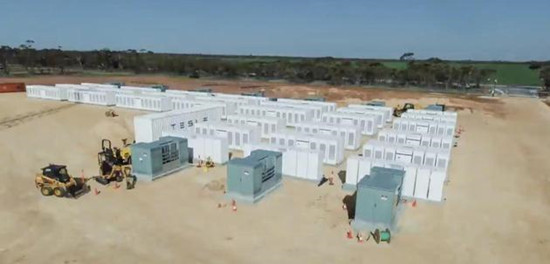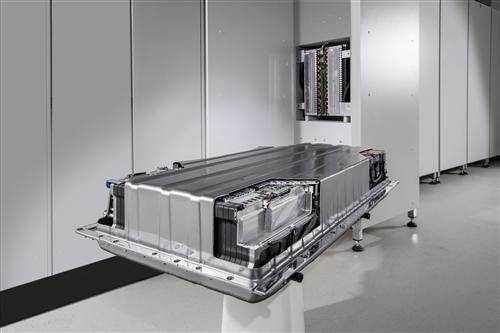Lithium battery storage temperature-chemical storage
Sep 18, 2019 Pageview:1776
Lithium batteries were originally introduced in 1991. We now use lithium-ion batteries as the primary source of energy for the electronics and devices we rely on, these include devices like smartphones, laptops, torches, and tablets, etc. The chemistry of lithium-ion batteries is also popular among large and small businesses because it offers longer life than the conventional batteries we were used to, and it has a lightweight design for end-users.
While lithium batteries provide benefits to the end-users, they still need to be tested to ensure their quality. In warehouses and storage buildings, large amounts of lithium batteries are stored at specific temperatures to ensure the safety of the storage environment. And the temperature these batteries are stored surely affects them.
How does temperature affect the storage of lithium-ion batteries?
Generally, the temperature that is best for the performance of the lithium battery is about 20°C. However, in extreme environments, different types of lithium batteries may be used and they will perform –depending on the temperature and the battery type.
At low temperature
LiPo and LiFePO4 batteries can both provide power with an operating range of -40 ° C to 55 ° C.
Their discharge capacity of about 0.5°C to -40°C represents more than 60% of their initial capacity. From 0.3 ° C to -35 ° C, they represent more than 70% of the initial capacity.
For example, if I take the low-temperature Grepow LiFePO4 battery, whose discharge curve varies between different temperatures from -40℃ - 55℃. The battery cycle test curve at 0.2 ° C and -20 ° C after 300 cycles will still have a retention capacity greater than 93%.
At high temperatures
Unlike low-temperature batteries, the high-temperature batteries can be around 80℃ max. In a hot environment, the battery discharge is likely to be faster than usual. Therefore, a battery with a larger capacity may be required to thrive
If you wish to avoid thermal damage, you must select a high/low-temperature battery or a battery with BMS to check the condition of the battery and provide specific protection.
Can lithium-ion batteries be stored in the cold?
The answer to that question is yes, but you need to understand the chemistry behind a li-ion battery. This will help in your storage decision.
A lithium-ion or lithium-polymer battery contains some rectangular metal plates which are surrounded by chemicals.
When the voltage passes through these metal plates, they become excited (i.e. the electrons of the battery become excited). They begin to bounce everywhere and go into what could be referred to as an electron party (because they are excited). The interaction between these plates and chemicals generates what is known as electrical energy. And this is what is stored in the battery to power your device. (It is not possible to store the actual electricity in a battery, you can only store the energy).
When you use your device, the energy stored in the battery runs out. The phone and the electron party dies off.
If these batteries were taken to an extreme weather condition, these dynamics may change a little. The reason for this is that the “dancing chemicals” which are dancing with electrons are quite sensitive to temperature. So, when it's hot or very cold, the chemicals of the battery are consumed faster than normal. This is because they do not have enough energy to ‘dance’, so the stored energy is not released, because there is not enough energy for that.
In extremely cold weather, for example when you leave your car overnight, upon your return to ignite it, the battery is too cold and the electrons cannot get excited. This makes everything to slow down and the chemicals will not be able to last as they used to do. Consequently, your battery discharges faster. This may also happen because the temperature does not let the battery reach its maximum charge capacity, so there is not enough charge in the phone
So what do you do? Which is worse? To store in the cold or hot room?
The comparison is not a straightforward one, but then, exposing your battery to extreme heat has the potential to damage it faster than you leaving it in a cold place. There are some cases where keeping batteries in a cool (but not freezing) environment is believed to slow or reduce your battery’s rate of discharge. This is the reason why many years ago, it was a common belief for many people to store their alkaline batteries in the refrigerator, just to preserve the charge in the battery.
Regardless of this, continued exposure of your battery to extreme cold or heat can both decrease the life expectancy of the battery cells, only in different ways. Therefore it is very important, that you regulate your battery temperature. This is the best way you can go about extending your battery life.
How should lithium-ion be stored?
While you may regulate your battery temperature, there are best practices you may follow –this is the recommended storage temperature. The temperature that is recommended for the storage of most lithium batteries is 59° F (15° C). It is likely your li-ion battery needs to be stored at a different temperature from your friends’ battery. This is so because some different lithium batteries have to be stored at different storage temperatures. So before storing, it is required and important that you thoroughly read the labels on your battery pack for proper storage instruction.
State of Charge (SOC) is also important. So the Lead-acid must be kept at a full charge always during the storage period. While the state of charge of nickel and lithium batteries have to be stored around 40%.
If improper storage of a battery occurs, your lithium batteries might start working in an unstable manner, which has the potential of causing excessive heat which can cause damage internally and even potentially trigger the battery to go on fire. For proper storage, battery cells have to be stored at a charge of between 30% and 50%.
If the cells are to be stored fully discharged, the cell voltage must not drop below the 2.0 mark, and the maximum voltage must not exceed 4.1 volts.
- Prev Article: Explain How Lithium Cobalt Compounds Produce Electricity in A Battery
- Next Article: Lithium-ion Batteries Overcharge Protection
Leave Message
Hottest Categories
-
Hottest Industry News
-
Latest Industry News











